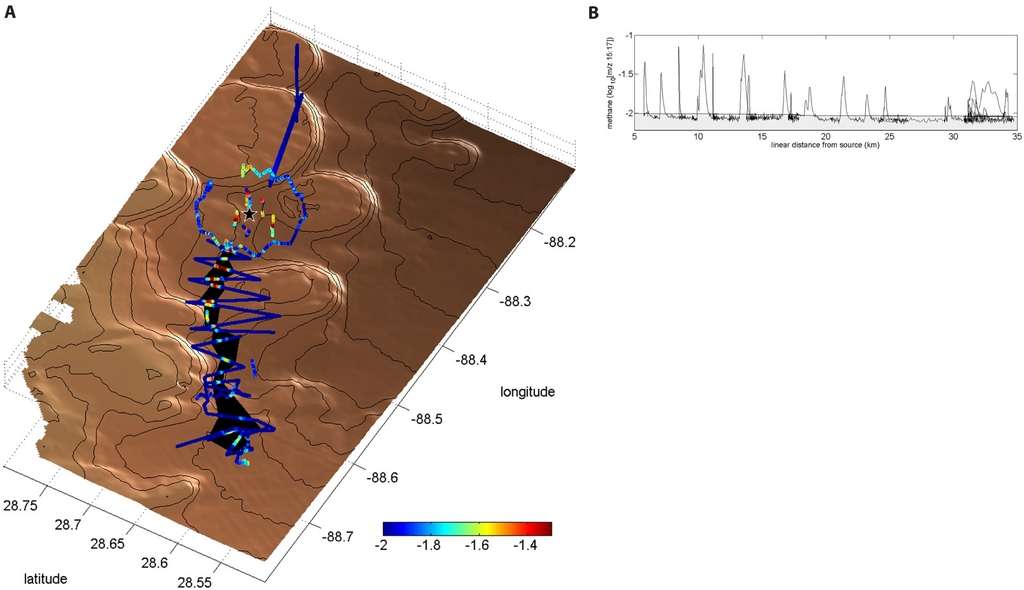eKos: 3600 ft deep, 20 mile oil plume persisting in the Gulf
by FishOutofWater, eKos, DailyKos, August 19, 2010
A continuous 20 mile long plume of oil found at a depth of 3600 feet has persisted for months, unaffected weathering and biodegradation, near the blown out BP well, according to a peer reviewed report published in Science magazine, written by oceanographers from Woods Hole Oceanographic institute. Oil that reaches the surface layer ocean becomes less toxic over time as evaporation and biodegradation remove toxic aromatic hydrocarbons such as benzene. Toxic components of the oil found at 3600 feet have remained at full strength.


- FishOutofWater's diary :: ::
A large methane spike was found associated with the oil plume at 1100 m (3600 ft) but dissolved oxygen levels did not correlate with the methane levels.

BP and U.S. government claims that this oil had dispersed and degraded have been proven false by independent, peer reviewed data.
Gas chromatographic analyses for only monoaromatic hydrocarbons of several water samples gathered using survey guidance confirm benzene, toluene, ethylbenzene, and total xylenes (BTEX) concentrations in excess of 50 μg/L within the plume at 16 km downrange from the well site (table S2).
....
This calculation indicates that more than 5500 kg/day of BTEX was introduced into this deepwater column plume, or approximately 40 barrels (6400 liters) per day of BTEX using a specific density of 0.85. BTEX is approximately 1% of the total amount of the oil released (16). Given an oil flow from the well of 53,000–62,000 barrels per day (8.4–9.9 million liters per day) (1), the leak released 530–620 barrels (84,000–99,000 liters) of BTEX per day. Thus, 6–7% of all of the BTEX leaked from the well was required to support this plume. These calculations reveal that natural oil seeps cannot be the source of this plume as the combined inputs for all of the northern Gulf of Mexico are approximately 1400 barrels (220,000 liters) of total oil per day or 14 barrels (2200 liters) of BTEX per day (17). Therefore, even if all of the natural seeps in the Gulf of Mexico were flowing into the plume, it would support less than half of the BTEX found in the plume. These findings confirm that a mechanism exists for direct hydrocarbon transfer into deep marine ecosystems.
....
The lack of systematic oxygen drawdown within the plume suggests that the petroleum hydrocarbons did not fuel appreciable microbial respiration on the temporal scales of our study.
Link: http://www.dailykos.com/storyonly/2010/8/19/894714/-eKos:-3600ft-Deep-20mi-Oil-Plume-Persisting-in-Gulf







No comments:
Post a Comment